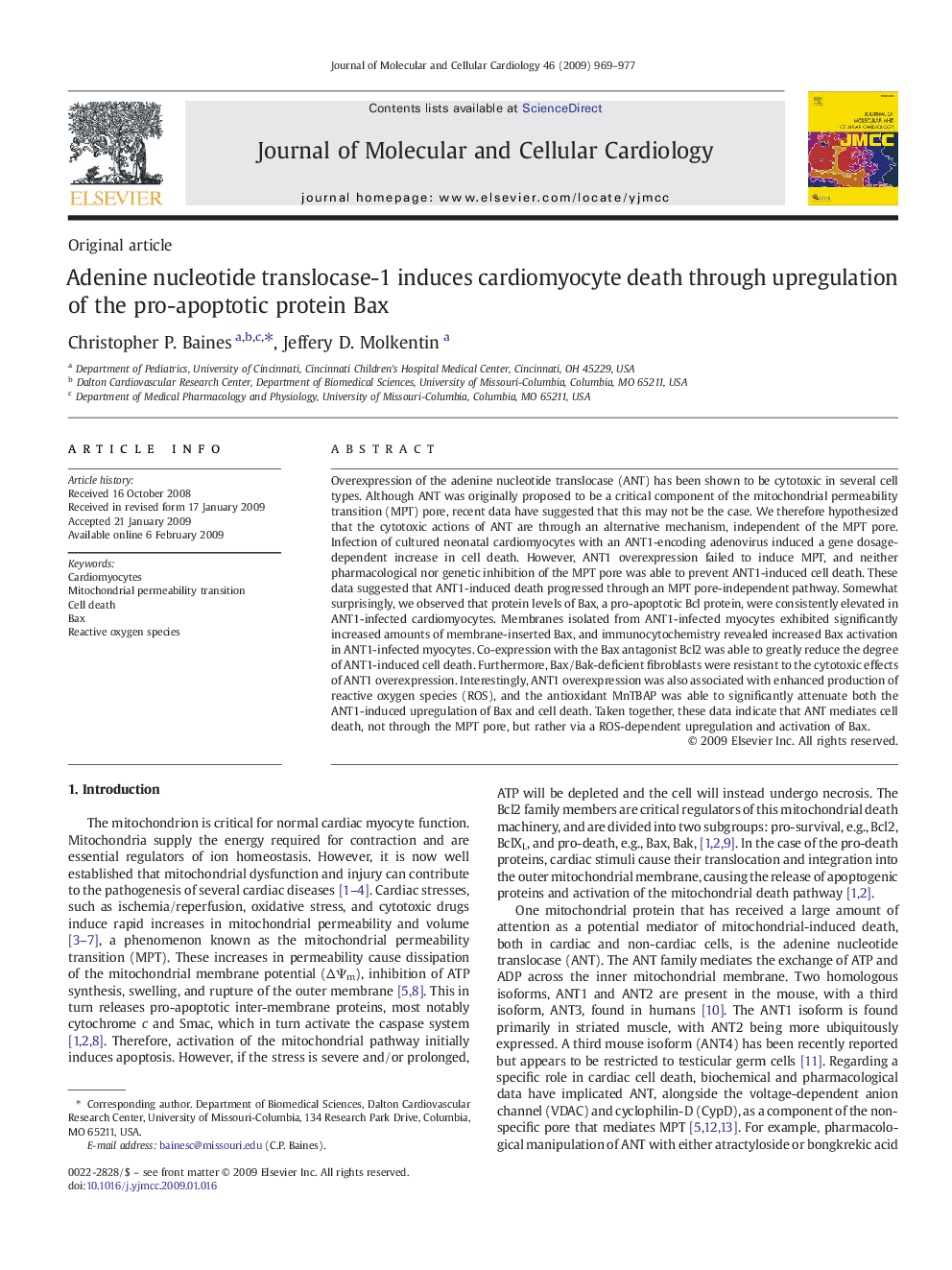| Article ID | Journal | Published Year | Pages | File Type |
|---|---|---|---|---|
| 2191126 | Journal of Molecular and Cellular Cardiology | 2009 | 9 Pages |
Overexpression of the adenine nucleotide translocase (ANT) has been shown to be cytotoxic in several cell types. Although ANT was originally proposed to be a critical component of the mitochondrial permeability transition (MPT) pore, recent data have suggested that this may not be the case. We therefore hypothesized that the cytotoxic actions of ANT are through an alternative mechanism, independent of the MPT pore. Infection of cultured neonatal cardiomyocytes with an ANT1-encoding adenovirus induced a gene dosage-dependent increase in cell death. However, ANT1 overexpression failed to induce MPT, and neither pharmacological nor genetic inhibition of the MPT pore was able to prevent ANT1-induced cell death. These data suggested that ANT1-induced death progressed through an MPT pore-independent pathway. Somewhat surprisingly, we observed that protein levels of Bax, a pro-apoptotic Bcl protein, were consistently elevated in ANT1-infected cardiomyocytes. Membranes isolated from ANT1-infected myocytes exhibited significantly increased amounts of membrane-inserted Bax, and immunocytochemistry revealed increased Bax activation in ANT1-infected myocytes. Co-expression with the Bax antagonist Bcl2 was able to greatly reduce the degree of ANT1-induced cell death. Furthermore, Bax/Bak-deficient fibroblasts were resistant to the cytotoxic effects of ANT1 overexpression. Interestingly, ANT1 overexpression was also associated with enhanced production of reactive oxygen species (ROS), and the antioxidant MnTBAP was able to significantly attenuate both the ANT1-induced upregulation of Bax and cell death. Taken together, these data indicate that ANT mediates cell death, not through the MPT pore, but rather via a ROS-dependent upregulation and activation of Bax.
